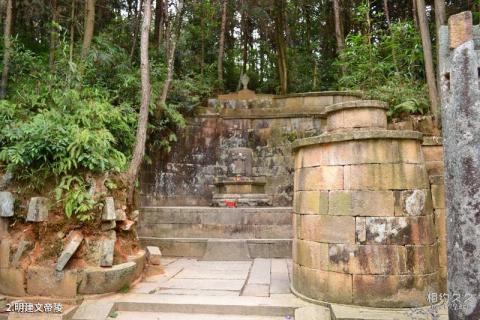
Introduction to the Mausoleum of Emperor Jianwen of the Ming Dynasty: The mausoleum of Emperor Jianwen of the Ming Dynasty has both a tomb and a tower, both for monks and seculars, and has unique regulations. It is rare in the history of Chinese tombs and has the following characteristics: 1. The regulations and layout are similar to those of the imperial mausoleums of the early Ming Dynasty Characteristically, the tomb adopts the Baoshan Minglou system and has a five-level tomb. The Shinto stone statues and Shinto stele in front of the tomb have been damaged. 2. The structure and decoration imply the regulations of the Ming emperor's mausoleum. The main mausoleum shaped like an official hat and chair, the stone worship pavilion, the dragon-shaped stone carved tomb hand, the three-level "step by step" steps, the Xumi base of the stupa, and the horizontal Ruyi cloud all indicate that the tomb owner is from the early Ming Dynasty. Members of the royal family, and the number of steps in the tomb, the stone masonry level of the tomb platform, and the stone masonry at the base of the stupa all show the number of "Nine Five". 3. The inscription on the stele has profound meaning. The inscription on the front of the stupa reflects the dual identity of the tomb owner: "The stupa of the third generation Zen Master Cang Haizhu, given by Jinlan Buddha and Riyuanming Master", which means: the owner of the tomb is a person who received the dragon robe given by Emperor Taizu. The cassock is also the emperor's grandson's experienced monk surnamed Wangsun Zhu. In the history of the Ming Dynasty, the person who enjoyed the "nine-five honors" and was a monk was none other than Zhu Yunwen. Pan Qun, an expert on the history of the Ming Dynasty and a professor at Nanjing University, happily stated "Ming Dynasty built the Mausoleum of Emperor Wen" after conducting on-site inspections and seeking verification from many sources.
